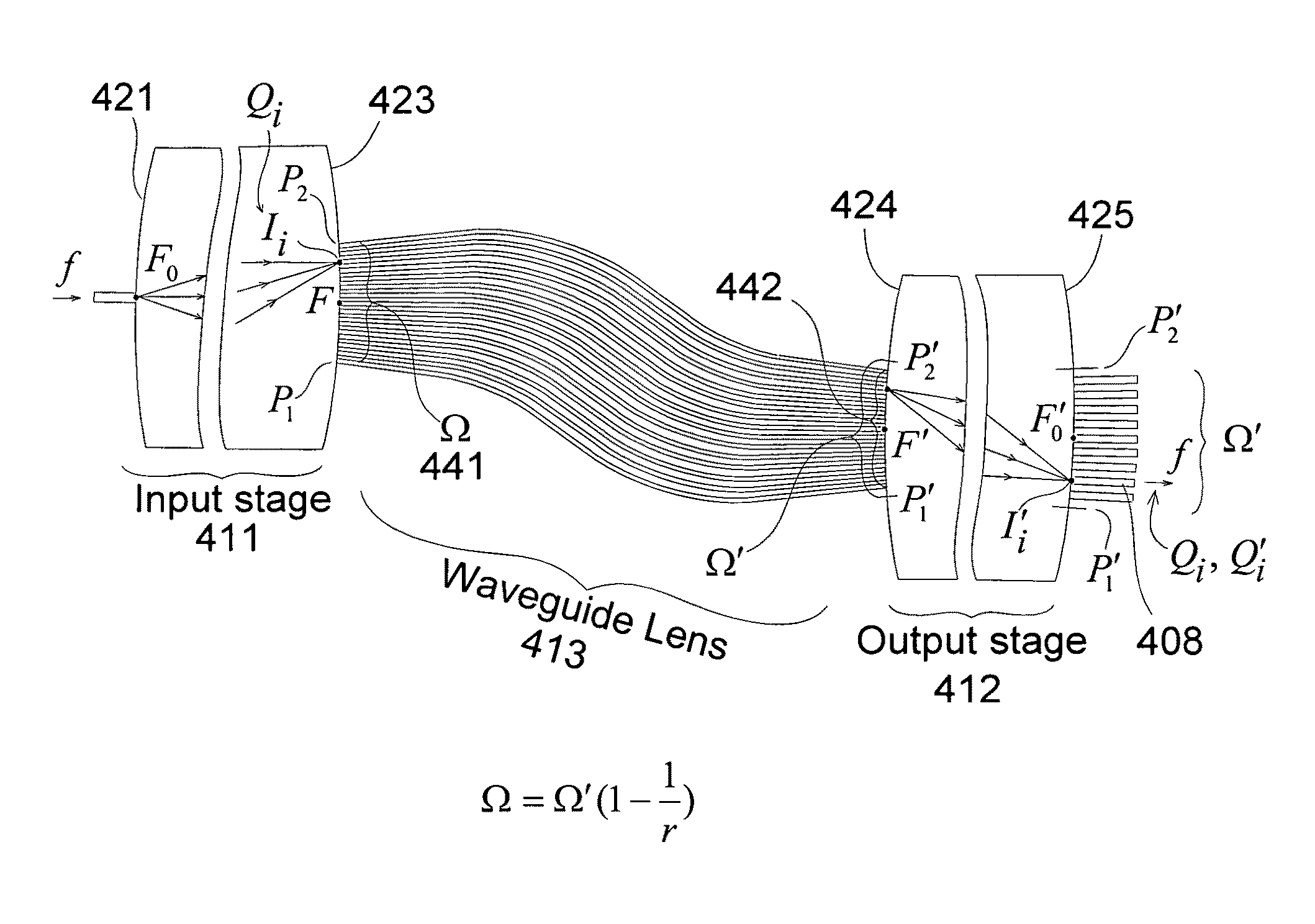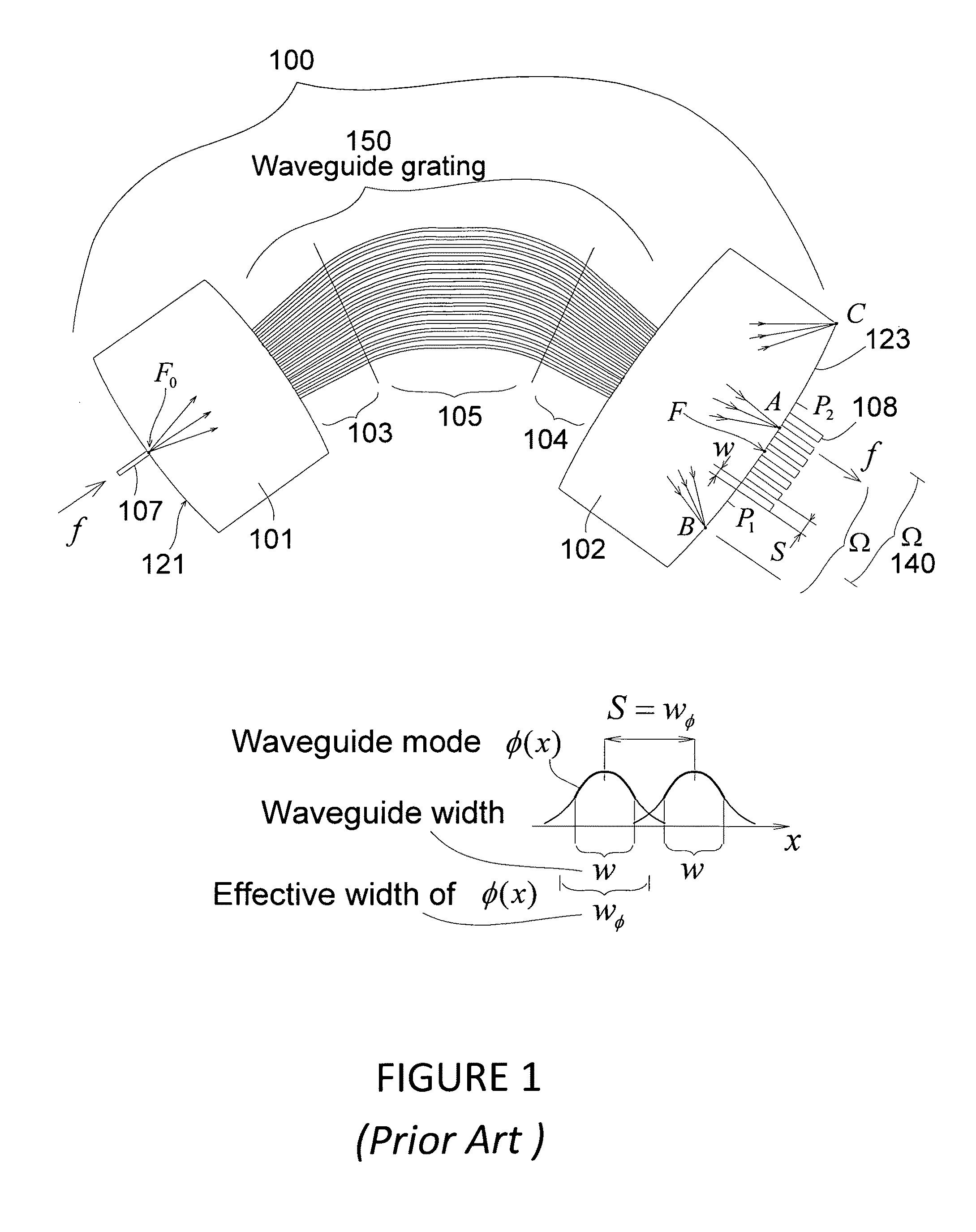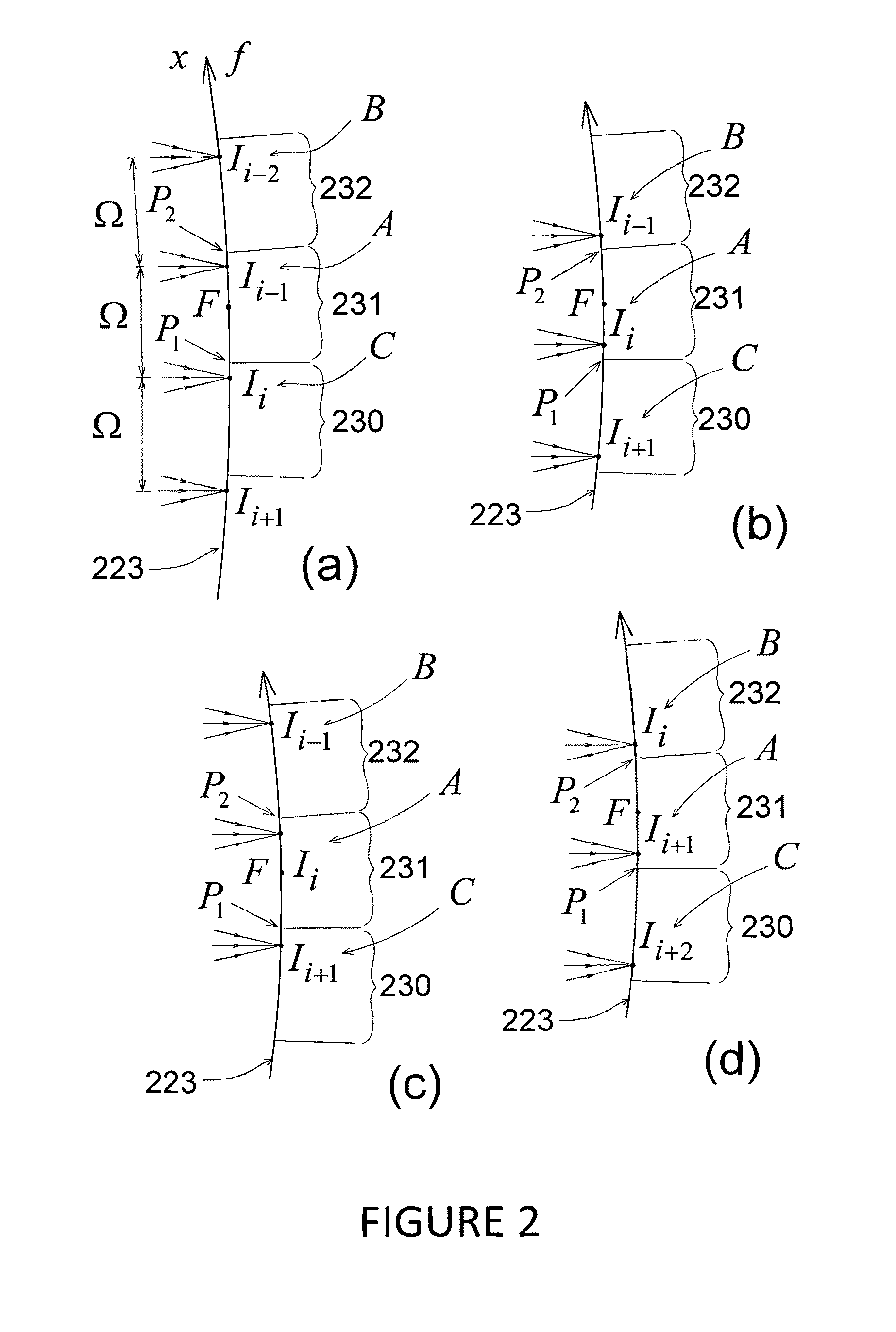Optical router with nearly ideal performance
a technology of optical routers and optical light guides, applied in the field of optical frequency routers, can solve the problems of narrow bandwidth, inability to design, and large size, and achieve the effects of improving performance, increasing the number of channels, and substantially reducing the loss caused by secondary images
- Summary
- Abstract
- Description
- Claims
- Application Information
AI Technical Summary
Benefits of technology
Problems solved by technology
Method used
Image
Examples
Embodiment Construction
[0018]Waveguide Grating Router
[0019]FIG. 1 shows the basic structure of a prior art imaging arrangement 100 of the type used in this invention. Note the imaging arrangement will also be referred to herein as a router. The imaging arrangement 100 is described in U.S. Pat. No. 5,002,350, issued on Mar. 26, 1991, and U.S. Pat. No. 5,136,671, issued on Aug. 4, 1992, The imaging arrangement 100 includes an input section 101 and an output section 102 spaced apart and interconnected by a grating 150 consisting of an appropriate plurality of optical waveguide arms 105 connected between two periodic arrays 103,104 of radial waveguides. The input and output sections typically are each free-space slabs, such as star couplers, and the arrangement has the property that wave energy applied by an input waveguide 107 acting as a point source forms a plurality of output images, of which three are shown as A, B, C in FIG. 1. The optical waveguide arms 105 typically are thin narrow layers (planar stri...
PUM
 Login to View More
Login to View More Abstract
Description
Claims
Application Information
 Login to View More
Login to View More - R&D
- Intellectual Property
- Life Sciences
- Materials
- Tech Scout
- Unparalleled Data Quality
- Higher Quality Content
- 60% Fewer Hallucinations
Browse by: Latest US Patents, China's latest patents, Technical Efficacy Thesaurus, Application Domain, Technology Topic, Popular Technical Reports.
© 2025 PatSnap. All rights reserved.Legal|Privacy policy|Modern Slavery Act Transparency Statement|Sitemap|About US| Contact US: help@patsnap.com



